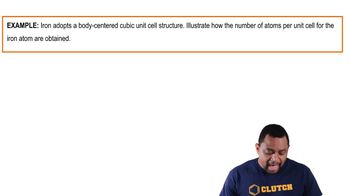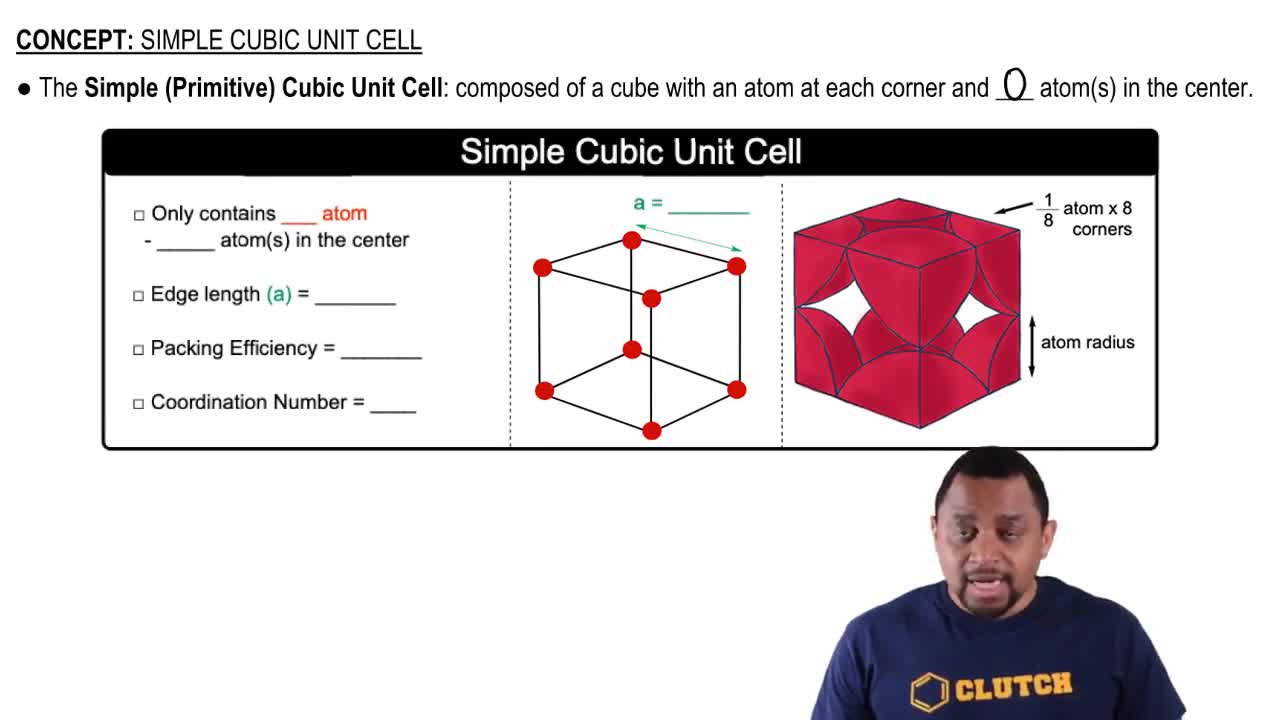Textbook Question
Determine the number of atoms per unit cell for each metal.
(b) Tungsten
465
views




Determine the number of atoms per unit cell for each metal.
(b) Tungsten
Determine the number of atoms per unit cell for each metal.
(c) Nickel
Platinum crystallizes with the face-centered cubic unit cell. The radius of a platinum atom is 139 pm. Calculate the edge length of the unit cell and the density of platinum in g/cm3.
Rhodium has a density of 12.41 g/cm3 and crystallizes with the face-centered cubic unit cell. Calculate the radius of a rhodium atom.
Barium has a density of 3.59 g/cm3 and crystallizes with the body-centered cubic unit cell. Calculate the radius of a barium atom.
Identify each solid as molecular, ionic, or atomic. a. CaCl2(s)